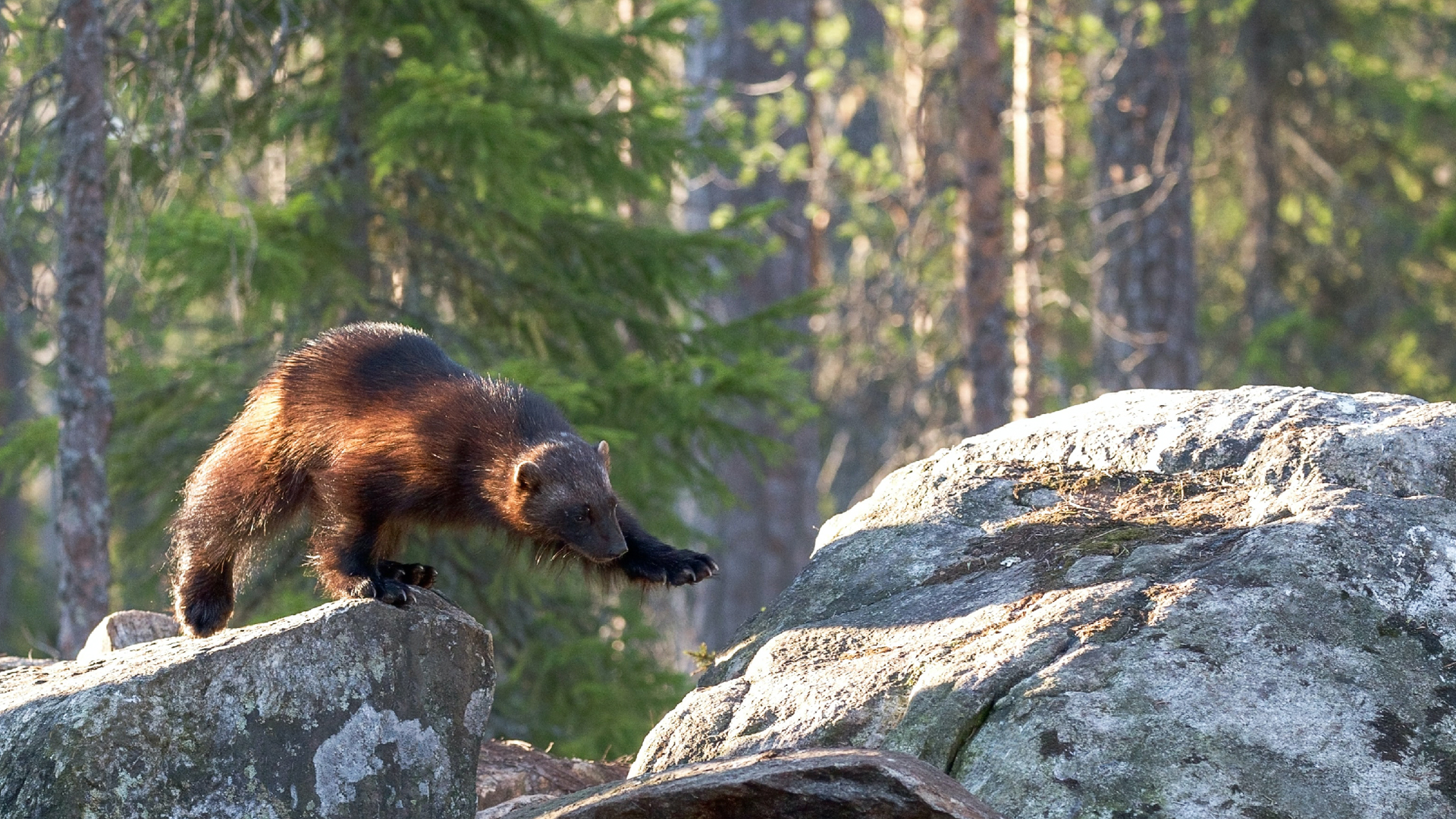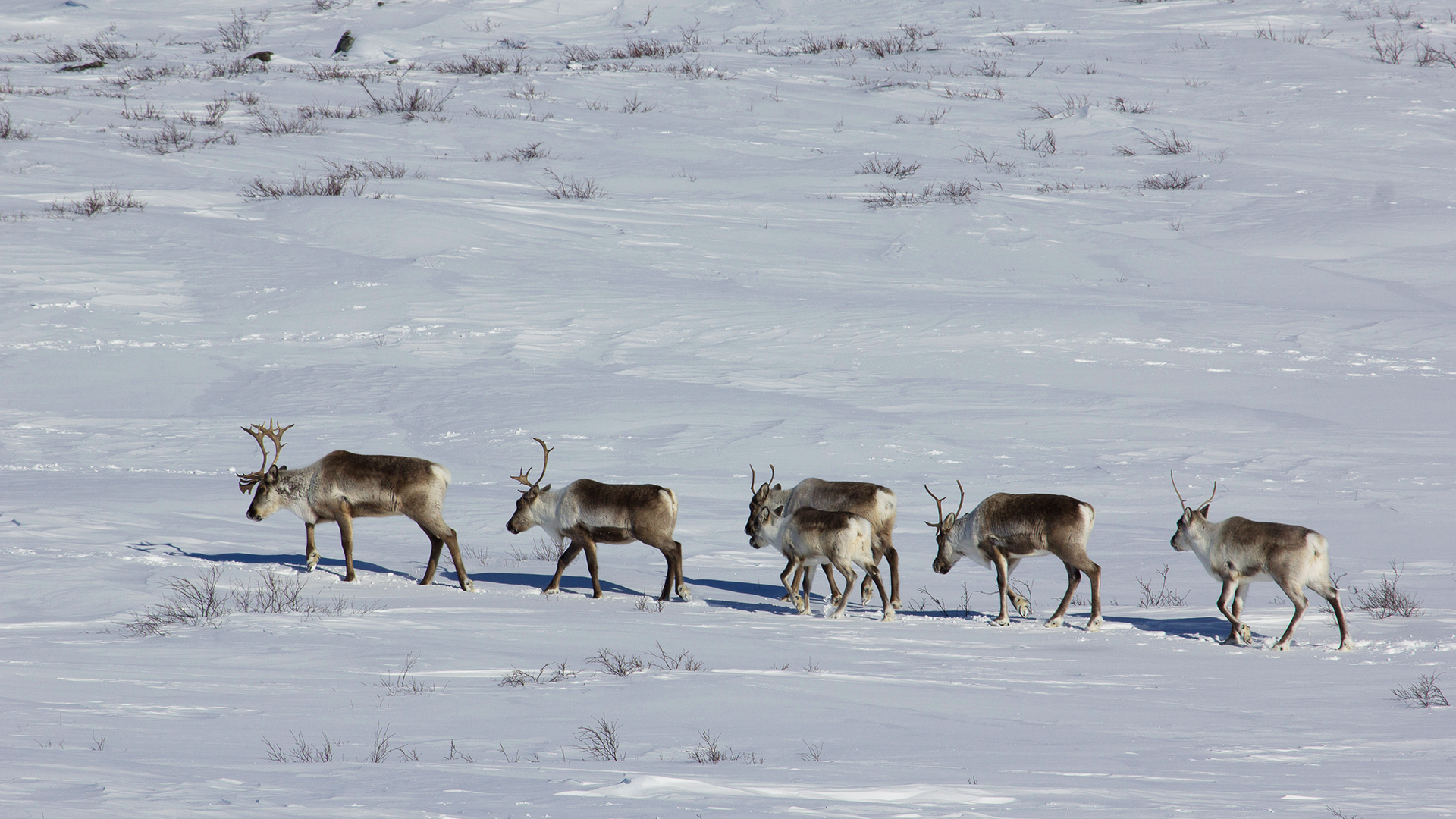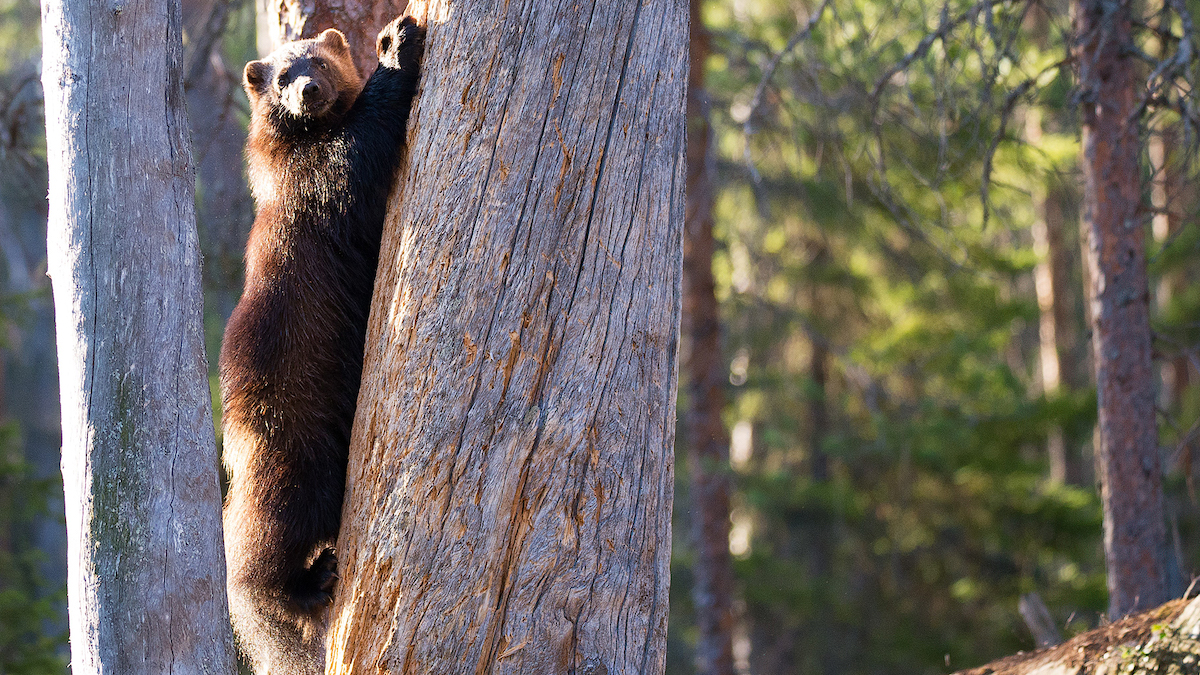Caribou… Wolves… and Diamond Experts (?!)

Canada’s Arctic is a vast and sprawling treasure in the northernmost region of the Earth. Spanning 40% of Canada’s landmass, its mineral-rich land is known for sub-zero winters with very little daylight and short, intense summers.
For centuries the most resilient bears, wolves and land mammals have thrived in this harsh environment, yet some populations are in decline. Climate change is the biggest single threat to their survival, followed by a combination of natural and anthropogenic factors including , hunting, habitat change or disease. Among the animals most at risk are caribou, musk-oxen, wolves, wolverines, polar bears and even grizzly bears, which have moved deeper north than ever before as the Arctic has warmed at twice the rate of the global average.
So what are natural diamond experts, out of all people, possibly doing in this region?
Get up close and personal with someone like Sarah McLean, an Environment and Permitting Manager with De Beers Group in Canada, and you’ll definitely understand.
Joining geologists and environmentalists, McLean is among those working to safeguard the natural habitats of rare and protected animals. McLean is part of a team that ensures that De Beers Group’s Canadian mining operations in the Northwest Territories (NWT) are, in order to build a long-term positive legacy, fully compliant with regulations. In the NWT, De Beers operates Gahcho Kué Mine and is the 100% owner of Snap Lake Mine, which is currently proceeding into closure.
“I’m a wildlife biologist by training and I’ve been with De Beers since 2013,” says McLean. “At De Beers we do not have a business strategy and an environmental strategy. We have a single strategy for sustainability. We call it Building Forever and it guides everything that we do. Under the Building Forever strategy, we have four main pillars: protecting the natural world, partnering for thriving communities, standing with women and girls and leading ethical practices across the industry”.
As well as ensuring the diamond mining world protects the habitats of Arctic animals and the surrounding wildlife, McLean’s role is also about combating climate change while protecting biodiversity and water. “The Northwest Territories is a vast region—40,000 people live here—where a broadly estimated 96% to 98% of the land is undisturbed. Where humans and nature come into contact, we have a huge responsibility. So our vision is to be not just a mining company, but one which contributes to community resilience and building a net positive impact in the world.”
For wildlife around De Beers’s Canadian operations, this means being good neighbors, McLean explains. “We have a strict no hunting or fishing policy for everyone who works here. Feeding animals is strictly forbidden and we maintain very tight control over our domestic waste, which helps to minimize impacts on land and wildlife.”
“While people and endangered animals exist in the same remote regions, diamonds can help to do good by enabling teams to track and monitor these animals, understanding how individual species can thrive.”
Working in partnership with the government of the Northwest Territories, Rio Tinto (Diavik Mine), Arctic Canadian Diamond Company (Ekati Mine) and the University of Calgary, De Beers Group has been an active participant in cooperative studies to understand and help conserve wolverine and grizzly bear populations.
“Participation in wolverine and grizzly bear hair-snagging programs is an excellent way for De Beers to contribute to a broader understanding of cumulative effects and enable sound management decisions,” says McLean. The simple process involves a collection device such as wire, brushes or adhesives safely snagging the animal’s hair, so samples containing useful DNA can be studied.
“Through this sort of collaborative effort, we contribute to the scientific knowledge base,” McLean explains. “The animals move about freely, they rub against the [snagging] pole, we get a little hair, send it off to the DNA lab and from those data government biologists are able to estimate population density and trends. It’s so efficient that it can identify individual animals.”
Near Snap Lake and Gahcho Kué, the process of hair snagging involved the erection of 105 posts which resulted in thousands of samples. Researchers working in sub-zero temperatures around these regions were able to access the wolverine posts on snowmobiles, while grizzly posts were visited in the summer using helicopters.

For the protection of caribou, which as a species has declined by 50% in the past 25 years, De Beers Group collaborates on research with the University of Northern British Columbia and the Government of the Northwest Territories. “These animals are culturally important to the indigenous peoples of the region. For many indigenous people, caribou are not just a food source, but a way of life. Due to multiple factors including climate change, their numbers have decreased dramatically. De Beers Group is working hard to not only minimize any potential effect of our operations on these animals, but also to contribute positively to their recovery.”
Like all Arctic wildlife, global warming is the main threat to caribou, whose foraging and droppings add nutrients to soil and water, helping to ensure the survival of ecosystems and people around them. Yet with warmer temperatures causing more rain in the winter, icy grounds are challenging caribou from reaching the food they need to make it to spring.
Working with the government and the World Wildlife Federation (WWF) in Canada, De Beers Group has helped to put radio collars on caribou to track and identify which herds are using which grounds, gaining a better understanding of their ecology.
What McLean is most proud of is the deep-rooted collaborative relationship that De Beers Group has developed with Indigenous communities in the north.
“We formed an agreement at the Gahcho mine, whereby six indigenous groups [the Deninu Kue First Nation, Lutsel K’e Dene First Nation, North Slave Métis Alliance, Northwest Territory Métis Nation, Tłı̨chǫ Government and Yellowknives Dene First Nation] work with us to monitor the environmental performance of the mine. It’s called Ni Hadi Xa which is Chipewayan for ‘People watching the land together’.
“Ni Hadi Xa employs both scientific and traditional knowledge monitors who work collaboratively with the De Beers environmental team. They collect samples, look for wildlife tracks and travel the area around the mine, hunting and fishing as they always would. They observe everything, even seeing if the air is different, how the caribou and other wildlife are moving and living on the land, always reporting back into the communities to explain their observations and making recommendations to De Beers. We are in constant dialogue because we know that we are visitors to this landscape. We want to tread as lightly as we can, eventually returning the mine area to a productive and ecologically viable ecosystem.
“Everything we learn,” McLean adds, “is information that enables De Beers Group in Canada to work with nature and have a light touch while contributing to conservation programs and research for these arctic species.”

“As results from Arctic wildlife studies continue to be monitored, wolverines and grizzlies in the region surrounding the mines currently have healthy and stable populations.”
This relationship with Indigenous Peoples of the Arctic is a vital foundation for the diamond world. Another positive and hopeful outcome from McLean’s work is that, as results from Arctic wildlife studies continue to be monitored, wolverines and grizzlies in the region surrounding the mines currently have healthy and stable populations. But, she is quick to remind us, we can all be doing much more.
“There are only 40,000 people living in the Northwest Territories. Whatever this relatively small group can achieve on a personal level isn’t enough. We all need to do what we can to reduce our impact on the Arctic. Reducing fossil fuel consumption and adopting renewable energy such as wind, solar or geothermal is a very worthy pursuit. If we try to slow climate change wherever we can, this will help the Arctic animals the most.”
How everyone can do to help save the Arctic:
- Reduce your carbon emissions and dependence on fossil fuels
- Shop responsibly at your local supermarket buying seasonal and local products and only buying the food you need to avoid food waste
- Make your home more energy efficient (this can include better insulation, hanging laundry to dry, using LED lightbulbs and solar energy solutions)
- Plant trees
- Recycle more
- Travel consciously, cutting unnecessary air and road travel to help reduce our carbon footprint
